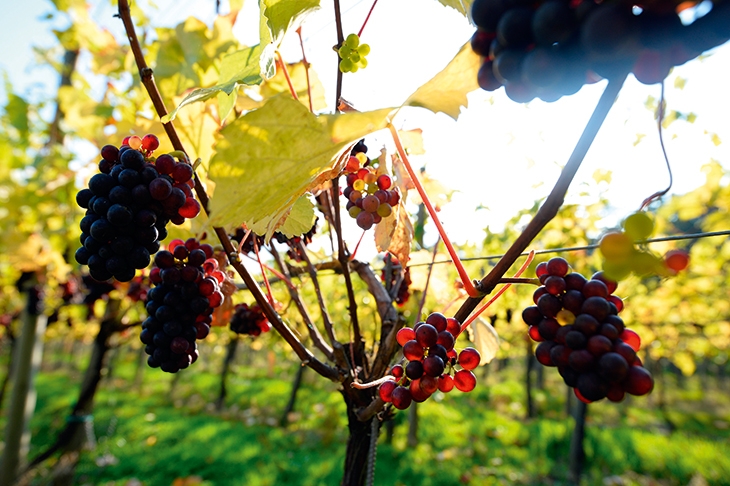As a wine bore, holidays abroad are a battle with the family to cram in as many vineyard visits as possible when all they want to do is go to the beach. But it’s only recently that I have begun to take advantage of the riches on my doorstep. I wonder how many Londoners realise that half an hour from St Pancras is one of the world’s most dynamic wine regions — Kent.
My previous reluctance might have something to do with the weather. As you leave London on the M20, there always seems to be a moment of sunshine that lights up the countryside before it starts to rain again. No matter. While many wine regions can be ugly — the Médoc is a drained swamp — Kent is lovely, even in the drizzle. Rather than a monoculture of vines, there’s a varied landscape of rolling hills, woods, fruit orchards (it is, after all, the ‘garden of England’), and occasional vineyards. The climate may be similar to champagne, but the feel is more like another part of France: Gascony.
On our last trip to the seaside, I insisted we stop at Biddenden estate near Ashford. The winemaker Julian Barnes (no relation to the novelist) showed me around. His family began as apple growers (they still make cider), but on a whim, his father planted vines in the 1960s. One in particular thrived: Ortega. This German variety makes undistinguished wine in its home country, but in Kent’s marginal climate it not only ripens reliably but produces something delicious.
It’s sparkling wines in the image of champagne, however, that are England’s speciality. The champagne grapes of Pinot Noir, Chardonnay and Pinot Meunier have found a second home on the South Downs. But despite climate change, you still have to be a bit mad to grow vines in England. It’s not easy to ripen grapes consistently — in 2012 many estates made no wine at all — so tourism is important. Richard Balfour-Lynn from the Hush Heath estate told me ‘we are in the hospitality sector’. As well as wines, he makes cider and owns two pubs. On a much bigger scale Chapel Down, the country’s largest producer (the Duchess of Cornwall has visited its vineyard), is also looking upmarket with a new tasting room and the launch of a sparkling wine at £100 a bottle.
It’s not the only estate with big plans; earlier this month, on a cold and rainy day, Pierre-Emmanuel Taittinger, from the champagne house, planted the first vines in a new venture called Domaine Evremond. He’s thinking long-term (you won’t be able to taste the wines for ten years), but in time there will be a hotel, restaurants and a visitor centre. He thinks Kent has certain advantages over champagne… not least the lack of unexploded first world war shells.
Not many emerging wine regions are fortunate enough to have Europe’s largest city on its doorstep, either. M. Taittinger is more ambitious — he wants to attract French tourists to Kent: ‘There is this beautiful unexplored island off the coast of France,’ as he put it. With the post-Brexit pound, English sparkling wine doesn’t look quite so expensive… Kent as a booze-cruise destination? Stranger things have happened.






Comments